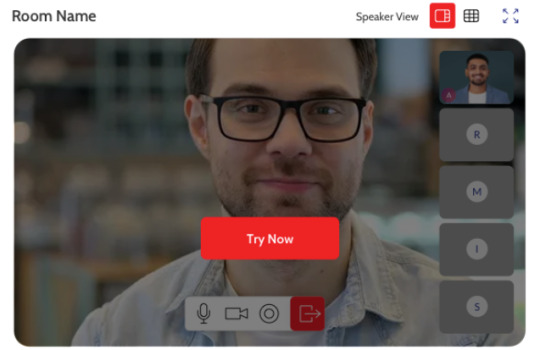#SaaS
Text
Best WLW TV of 2023 Part 2

Robyn Hood

Monarch legacy of monsters


FROM

Yuri is my Job
youtube
Paper Dolls
The Lazarus Project

The Magical Revolution of the Reincarnated Princess and the Genius Young Lady
youtube
Saas, Bahu Aur Flamingo
youtube
Urban La Vida es Nuestra

I'm in Love with the Villainess

Invasion, apple tv

Beacon 23
youtube
Calle y Poche: Sin Etiquetas

The Afterparty
youtube
Love Allways
#Robyn Hood#monarch legacy of monsters#yuri is my job!#the lazarus project#The Magical Revolution of the Reincarnated Princess and the Genius Young Lady#I'm in Love with the Villainess#invasion#invasion apple tv#urban: la vida es nuestra#Saas#Bahu Aur Flamingo#Youtube#paper dolls#beacon 23#calle y poche#the afterparty#from epix#FROM#lesbian#gay#lgbt#lgbtq#wlw#bi#girls who like girls#lgbtqia#sapphic#lgbtqa+#Love Allways#tv
490 notes
·
View notes
Text
Cloudburst

Enshittification isn’t inevitable: under different conditions and constraints, the old, good internet could have given way to a new, good internet. Enshittification is the result of specific policy choices: encouraging monopolies; enabling high-speed, digital shell games; and blocking interoperability.
First we allowed companies to buy up their competitors. Google is the shining example here: having made one good product (search), they then fielded an essentially unbroken string of in-house flops, but it didn’t matter, because they were able to buy their way to glory: video, mobile, ad-tech, server management, docs, navigation…They’re not Willy Wonka’s idea factory, they’re Rich Uncle Pennybags, making up for their lack of invention by buying out everyone else:
https://locusmag.com/2022/03/cory-doctorow-vertically-challenged/
But this acquisition-fueled growth isn’t unique to tech. Every administration since Reagan (but not Biden! more on this later) has chipped away at antitrust enforcement, so that every sector has undergone an orgy of mergers, from athletic shoes to sea freight, eyeglasses to pro wrestling:
https://www.whitehouse.gov/cea/written-materials/2021/07/09/the-importance-of-competition-for-the-american-economy/
But tech is different, because digital is flexible in a way that analog can never be. Tech companies can “twiddle” the back-ends of their clouds to change the rules of the business from moment to moment, in a high-speed shell-game that can make it impossible to know what kind of deal you’re getting:
https://pluralistic.net/2023/02/27/knob-jockeys/#bros-be-twiddlin
To make things worse, users are banned from twiddling. The thicket of rules we call IP ensure that twiddling is only done against users, never for them. Reverse-engineering, scraping, bots — these can all be blocked with legal threats and suits and even criminal sanctions, even if they’re being done for legitimate purposes:
https://locusmag.com/2020/09/cory-doctorow-ip/
Enhittification isn’t inevitable but if we let companies buy all their competitors, if we let them twiddle us with every hour that God sends, if we make it illegal to twiddle back in self-defense, we will get twiddled to death. When a company can operate without the discipline of competition, nor of privacy law, nor of labor law, nor of fair trading law, with the US government standing by to punish any rival who alters the logic of their service, then enshittification is the utterly foreseeable outcome.
To understand how our technology gets distorted by these policy choices, consider “The Cloud.” Once, “the cloud” was just a white-board glyph, a way to show that some part of a software’s logic would touch some commodified, fungible, interchangeable appendage of the internet. Today, “The Cloud” is a flashing warning sign, the harbinger of enshittification.
When your image-editing tools live on your computer, your files are yours. But once Adobe moves your software to The Cloud, your critical, labor-intensive, unrecreatable images are purely contingent. At at time, without notice, Adobe can twiddle the back end and literally steal the colors out of your own files:
https://pluralistic.net/2022/10/28/fade-to-black/#trust-the-process
The finance sector loves The Cloud. Add “The Cloud” to a product and profits (money you get for selling something) can turn into rents (money you get for owning something). Profits can be eroded by competition, but rents are evergreen:
https://pluralistic.net/2023/07/24/rent-to-pwn/#kitt-is-a-demon
No wonder The Cloud has seeped into every corner of our lives. Remember your first iPod? Adding music to it was trivial: double click any music file to import it into iTunes, then plug in your iPod and presto, synched! Today, even sophisticated technology users struggle to “side load” files onto their mobile devices. Instead, the mobile duopoly — Apple and Google, who bought their way to mobile glory and have converged on the same rent-seeking business practices, down to the percentages they charge — want you to get your files from The Cloud, via their apps. This isn’t for technological reasons, it’s a business imperative: 30% of every transaction that involves an app gets creamed off by either Apple or Google in pure rents:
https://www.kickstarter.com/projects/doctorow/red-team-blues-another-audiobook-that-amazon-wont-sell/posts/3788112
And yet, The Cloud is undeniably useful. Having your files synch across multiple devices, including your collaborators’ devices, with built-in tools for resolving conflicting changes, is amazing. Indeed, this feat is the holy grail of networked tools, because it’s how programmers write all the software we use, including software in The Cloud.
If you want to know how good a tool can be, just look at the tools that toolsmiths use. With “source control” — the software programmers use to collaboratively write software — we get a very different vision of how The Cloud could operate. Indeed, modern source control doesn’t use The Cloud at all. Programmers’ workflow doesn’t break if they can’t access the internet, and if the company that provides their source control servers goes away, it’s simplicity itself to move onto another server provider.
This isn’t The Cloud, it’s just “the cloud” — that whiteboard glyph from the days of the old, good internet — freely interchangeable, eminently fungible, disposable and replaceable. For a tool like git, Github is just one possible synchronization point among many, all of which have a workflow whereby programmers’ computers automatically make local copies of all relevant data and periodically lob it back up to one or more servers, resolving conflicting edits through a process that is also largely automated.
There’s a name for this model: it’s called “Local First” computing, which is computing that starts from the presumption that the user and their device is the most important element of the system. Networked servers are dumb pipes and dumb storage, a nice-to-have that fails gracefully when it’s not available.
The data structures of source-code are among the most complicated formats we have; if we can do this for code, we can do it for spreadsheets, word-processing files, slide-decks, even edit-decision-lists for video and audio projects. If local-first computing can work for programmers writing code, it can work for the programs those programmers write.
Local-first computing is experiencing a renaissance. Writing for Wired, Gregory Barber traces the history of the movement, starting with the French computer scientist Marc Shapiro, who helped develop the theory of “Conflict-Free Replicated Data” — a way to synchronize data after multiple people edit it — two decades ago:
https://www.wired.com/story/the-cloud-is-a-prison-can-the-local-first-software-movement-set-us-free/
Shapiro and his co-author Nuno Preguiça envisioned CFRD as the building block of a new generation of P2P collaboration tools that weren’t exactly serverless, but which also didn’t rely on servers as the lynchpin of their operation. They published a technical paper that, while exiting, was largely drowned out by the release of GoogleDocs (based on technology built by a company that Google bought, not something Google made in-house).
Shapiro and Preguiça’s work got fresh interest with the 2019 publication of “Local-First Software: You Own Your Data, in spite of the Cloud,” a viral whitepaper-cum-manifesto from a quartet of computer scientists associated with Cambridge University and Ink and Switch, a self-described “industrial research lab”:
https://www.inkandswitch.com/local-first/static/local-first.pdf
The paper describes how its authors — Martin Kleppmann, Adam Wiggins, Peter van Hardenberg and Mark McGranaghan — prototyped and tested a bunch of simple local-first collaboration tools built on CFRD algorithms, with the goal of “network optional…seamless collaboration.” The results are impressive, if nascent. Conflicting edits were simpler to resolve than the authors anticipated, and users found URLs to be a good, intuitive way of sharing documents. The biggest hurdles are relatively minor, like managing large amounts of change-data associated with shared files.
Just as importantly, the paper makes the case for why you’d want to switch to local-first computing. The Cloud is not reliable. Companies like Evernote don’t last forever — they can disappear in an eyeblink, and take your data with them:
https://www.theverge.com/2023/7/9/23789012/evernote-layoff-us-staff-bending-spoons-note-taking-app
Google isn’t likely to disappear any time soon, but Google is a graduate of the Darth Vader MBA program (“I have altered the deal, pray I don’t alter it any further”) and notorious for shuttering its products, even beloved ones like Google Reader:
https://www.theverge.com/23778253/google-reader-death-2013-rss-social
And while the authors don’t mention it, Google is also prone to simply kicking people off all its services, costing them their phone numbers, email addresses, photos, document archives and more:
https://pluralistic.net/2022/08/22/allopathic-risk/#snitches-get-stitches
There is enormous enthusiasm among developers for local-first application design, which is only natural. After all, companies that use The Cloud go to great lengths to make it just “the cloud,” using containerization to simplify hopping from one cloud provider to another in a bid to stave off lock-in from their cloud providers and the enshittification that inevitably follows.
The nimbleness of containerization acts as a disciplining force on cloud providers when they deal with their business customers: disciplined by the threat of losing money, cloud companies are incentivized to treat those customers better. The companies we deal with as end-users know exactly how bad it gets when a tech company can impose high switching costs on you and then turn the screws until things are almost-but-not-quite so bad that you bolt for the doors. They devote fantastic effort to making sure that never happens to them — and that they can always do that to you.
Interoperability — the ability to leave one service for another — is technology’s secret weapon, the thing that ensures that users can turn The Cloud into “the cloud,” a humble whiteboard glyph that you can erase and redraw whenever it suits you. It’s the greatest hedge we have against enshittification, so small wonder that Big Tech has spent decades using interop to clobber their competitors, and lobbying to make it illegal to use interop against them:
https://locusmag.com/2019/01/cory-doctorow-disruption-for-thee-but-not-for-me/
Getting interop back is a hard slog, but it’s also our best shot at creating a new, good internet that lives up the promise of the old, good internet. In my next book, The Internet Con: How to Seize the Means of Computation (Verso Books, Sept 5), I set out a program fro disenshittifying the internet:
https://www.versobooks.com/products/3035-the-internet-con
The book is up for pre-order on Kickstarter now, along with an independent, DRM-free audiobooks (DRM-free media is the content-layer equivalent of containerized services — you can move them into or out of any app you want):
http://seizethemeansofcomputation.org
Meanwhile, Lina Khan, the FTC and the DoJ Antitrust Division are taking steps to halt the economic side of enshittification, publishing new merger guidelines that will ban the kind of anticompetitive merger that let Big Tech buy its way to glory:
https://www.theatlantic.com/ideas/archive/2023/07/biden-administration-corporate-merger-antitrust-guidelines/674779/
The internet doesn’t have to be enshittified, and it’s not too late to disenshittify it. Indeed — the same forces that enshittified the internet — monopoly mergers, a privacy and labor free-for-all, prohibitions on user-side twiddling — have enshittified everything from cars to powered wheelchairs. Not only should we fight enshittification — we must.

Back my anti-enshittification Kickstarter here!

If you’d like an essay-formatted version of this post to read or share, here’s a link to it on pluralistic.net, my surveillance-free, ad-
free, tracker-free blog:
https://pluralistic.net/2023/08/03/there-is-no-cloud/#only-other-peoples-computers

Image:
Drahtlos (modified)
https://commons.wikimedia.org/wiki/File:Motherboard_Intel_386.jpg
CC BY-SA 4.0
https://creativecommons.org/licenses/by-sa/4.0/deed.en
—
cdsessums (modified)
https://commons.wikimedia.org/wiki/File:Monsoon_Season_Flagstaff_AZ_clouds_storm.jpg
CC BY-SA 2.0
https://creativecommons.org/licenses/by-sa/2.0/deed.en
#pluralistic#web3#darth vader mba#conflict-free replicated data#CRDT#computer science#saas#Mark McGranaghan#Adam Wiggins#evernote#git#local-first computing#the cloud#cloud computing#enshittification#technological self-determination#Martin Kleppmann#Peter van Hardenberg
886 notes
·
View notes
Text
Bhagwan bhala kre uss ladki ka jis ki saas meri school ki teachers hongi 🙏🏻🙏🏻
#desi academia#being desi#desi shit posting#desi moodboard#desi things#desi stuff#wattpad#desi aesthetic#desi memes#desi humor#teachers#shaadi#saas#annoying#sexist#misogny#ayehaye#bas krdo#hogya mera#school
14 notes
·
View notes
Text
The Role of Scheme Management Software in Business

The corporate world has become more competitive recently, and with it, scheme management. If schemes are effectively managed, they play a crucial role in enhancing sales, customer satisfaction, and profits. The question then arises: Do sales executives need help coordinating their campaigns effectively, which poses challenges for maintaining customer satisfaction and profitability maximization? Does your company struggle with growth due to errors, delays, and inefficiencies caused by manual operations?
For those looking to streamline promotions and enhance efficiency, it's worth exploring scheme management software. This application is designed to streamline the process of managing offers and schemes for national distributors or manufacturers. It allows you to enter scheme parameters like validity period, scheme concept, terms and conditions, price involved, etc., into the system and share the information. Let's explore how it can drive business expansion.
What Makes Efficient Scheme Management So Important?
The scheme management platform helps manage promotional plans that involve developing, launching, and monitoring strategies to boost sales and revenue. Previously, errors, paperwork, and complex calculations were common while implementing schemes manually. Anticipated outcomes included inefficiencies and challenges in measuring program success.
Companies have shifted their approach to scheme administration by utilizing scheme management software. It streamlines various aspects of administration so businesses can effortlessly create, execute, and oversee schemes. It is recognized as workflow efficiency software because it enhances business productivity. Let’s explore how implementing this software can revolutionize your business operations and drive growth.
1. Adaptability in Defining Schemes
Scheme management software integrates supplier loyalty programs with defined regulations. Its dynamic system assists end-users in effectively planning, creating, and developing innovative strategies. Regarding channel sales management, field force automation, or sales tracking, software for managing schemes can be customized to fit specific client requirements.
2. Optimized Dealer Satisfaction
Supervisors can track project advancement through the scheme management app's enterprise resource planning (ERP) integration. It is structured and operates methodically, expediting the implementation of new projects. Additionally, it efficiently manages credit notes, boosting sales, customer trust, and overall profits.
3. Boosts Productivity
Once in auto mode, the scheme assessment speeds up and requires minimal human involvement. Scheme management software greatly enhances reclaiming schemes, which are known for their challenges and setbacks, resulting in lost opportunities. It improves productivity, generates leads, increases brand visibility, and fosters dealer confidence.
4. Emphasizing a Strong Sense of Responsibility
Operating scheme automation software involves significant responsibility, as it documents and displays all credit transactions, records, and deals. In addition, the software's report production feature simplifies generating reports on sales, events/promotions, costs, and costings.
Scheme management software enhances corporate operations, scheme performance, and sales. Streamlining design, validation, and monitoring processes enhances productivity and drives revenue growth.
Nural Schemes enables you to share schemes and evaluate their performance. It has benefited a wide range of sales professionals and retail outlets. Clients have experienced significant growth in human capital, revenue, and operational expense savings with various scheme combinations. Rely on Nural for optimizing business solutions and top-notch workflow efficiency software. Schedule a demo today.
2 notes
·
View notes
Text
i lo
ve the new SaaS model PURELY for businesses. its a good idea for businesses that keeps the price less upfront, and more evenly spread out, and i imagine its good for small businesses who cant afford the upfront pay once, keep forever, but need the tools that the software provides.
i also like SaaS model for home use. Why? cuz its dumb and it drives people to find better alternatives. dont use adobe animate. use opentoonz. dont use adobe premiere. use kdenlive.
Not to say that using stuff like opentoonz and kdenlive in a work environment is bad, of course, thats very slay
2 notes
·
View notes
Text
Finding Hidden Gems: Quiet Hiring for a Thriving Workplace

Building a strong, productive team is crucial for any business's success. While external hiring can bring fresh perspectives, sometimes the best talent might already be within reach. This is where quiet hiring comes in.
What is Quiet Hiring?
Quiet hiring is about utilizing internal resources before resorting to external job postings. It involves strategically developing and promoting current employees by giving them new opportunities, responsibilities, or even internal transfers to different roles.
Benefits of Quiet Hiring:
Cost-Effective: Internal promotions are significantly cheaper than external hiring, saving money on recruitment fees, advertising, and onboarding costs.
Increased Morale: Recognizing and rewarding existing employees boosts morale and creates a loyal, engaged workforce.
Improved Retention: When employees see career growth opportunities within the company, they're more likely to stay, reducing costly turnover.
Faster Integration: Promoting someone already familiar with the company culture and systems allows for a smoother transition and quicker contribution to the team.
Enhanced Talent Management: Quiet hiring encourages proactive talent management, identifying and nurturing potential within your existing workforce.
Implementing Quiet Hiring:
Identify Skills and Potential: Regularly assess your employees' skills and aspirations through performance reviews, one-on-one meetings, and skill gap analyses.
Create Internal Development Programs: Offer training sessions, mentorship programs, or cross-training opportunities to help employees develop new skills and reach their full potential.
Encourage Open Communication: Foster an environment where employees feel comfortable expressing their career goals. Conduct regular career development discussions and provide guidance on internal opportunities.
Promote From Within: When a new position arises, consider internal candidates first. This doesn't mean overlooking exceptional external candidates, but it demonstrates your commitment to employee growth.
Offer Lateral Moves: Sometimes, employees crave new challenges without necessarily moving up in the hierarchy. Consider internal transfers to different departments or projects to keep them engaged and energized.
Recognize and Reward: Celebrate employee achievements, both big and small. Public recognition, additional responsibilities, or competitive compensation reinforce your commitment to their development.
Quiet Hiring for Balance and Productivity:
By prioritizing quiet hiring in the workplace, you create a win-win situation. Employees feel valued and motivated, leading to increased productivity and reduced turnover. This translates to a more balanced and sustainable workplace for your business to thrive.
Remember: Quiet hiring is not a one-time solution, but an ongoing strategy. By fostering a culture of learning, development, and internal growth, you can unlock the hidden potential within your existing workforce, creating a thriving and productive organization.
#hiring#quiethiring#hr#hrtech#hr solutions#saas#b2b#workplace#employeeengagement#hiringstrategies#recruitment
2 notes
·
View notes
Text
Unlocking Business Advantages with a SaaS Development Company

Collaborating with a SaaS development company offers numerous benefits for your business. Here are some key advantages:
Scalability: SaaS solutions are inherently scalable, effortlessly adapting to your business's evolving needs. This agility eliminates the complexities and expenses associated with in-house software development and maintenance.
Cost-Effectiveness: SaaS solutions follow a subscription-based model, making them more cost-effective compared to traditional software. With no upfront or ongoing maintenance costs, businesses of all sizes can access the necessary software without straining their budgets.
Access to Cutting-Edge Technology: SaaS development companies lead in software innovation, ensuring access to the latest technology and tools. Staying at the forefront empowers your business to leverage new features and capabilities as they emerge.
Expertise and Experience: Leveraging a SaaS development company taps into a reservoir of expertise and experience in software solutions. These professionals assist in automating business processes, providing the right tools to enhance efficiency and productivity.
Flexibility: SaaS solutions offer accessibility from any location, enabling remote work and collaboration with team members and clients worldwide. This flexibility facilitates business scaling and expansion into new markets.
Security: SaaS development companies prioritize security investments to safeguard your data. This commitment helps protect your business from data breaches and cyber-attacks, ensuring the safety and security of sensitive information.
Regular Updates and Maintenance: SaaS development companies take charge of regular software updates and maintenance, alleviating this responsibility from your business.
In essence, collaborating with a SaaS development company streamlines business processes, reduces costs, and ensures your business remains technologically advanced. Implementing the right software solutions positions your business for growth and sustained success.
2 notes
·
View notes
Text

The Future of SaaS: Advanced Digital Marketing Strategies for Dynamic Growth
In the rapidly evolving world of Software as a Service (SaaS), companies are incessantly seeking innovative ways to stay ahead. The heart of this quest lies in effective marketing strategies, particularly in the realm of Digital Marketing for SaaS companies. This article delves into the advanced tactics that are shaping the future of SaaS, focusing on dynamic growth through digital marketing.
The Strategic Imperative of Digital Marketing in the SaaS Sector
The SaaS industry, inherently digital in its delivery, requires a marketing approach that resonates with its technological ethos. Digital Marketing for Software Companies is not just a pathway but a strategic imperative. It involves a plethora of tactics, from search engine optimization (SEO) and content marketing to social media strategies and email marketing campaigns. However, the key to success in this digital arena is not just employing these tactics but mastering them to create a symphony of growth-driven strategies.
The Role of Specialized Agencies in SaaS Marketing
Given the complexity and the nuanced understanding required in this field, many SaaS companies turn to specialized agencies for help. A SaaS digital marketing agency offers expertise that goes beyond the conventional marketing approach. These agencies understand the unique challenges and opportunities within the SaaS landscape. They provide tailored strategies that align with the company's specific goals, be it user acquisition, retention, or expansion into new markets.
B2B Focus: A Unique Dimension in SaaS Marketing
A significant proportion of SaaS companies operate in the B2B (business-to-business) domain, which introduces an additional layer of complexity to their marketing efforts. A b2b SaaS marketing agency specializes in understanding the intricacies of B2B relationships. This involves nurturing long-term partnerships, aligning with business processes, and providing solutions that resonate with business clients’ needs. The focus here is not just on selling a product but on building a relationship and becoming an integral part of the client’s operational fabric.
Advanced Strategies for Digital Marketing in the SaaS World
Content Marketing:
In the digital marketing landscape, content is king. For SaaS companies, this means creating high-quality, informative, and engaging content that addresses the specific needs and pain points of their target audience. This content can take various forms – from in-depth blog posts and whitepapers to webinars and instructional videos. The goal is to establish the company as a thought leader in its niche, building trust and credibility among potential customers.
Leveraging Data for Personalized Marketing
Data analytics plays a crucial role in understanding customer behavior and preferences. SaaS companies can leverage this data to create personalized marketing campaigns that speak directly to the needs of individual customers or segments. This level of personalization enhances customer experience and increases the likelihood of conversion and retention.
SEO: Optimizing for Visibility and Reach
Search Engine Optimization (SEO) is crucial for increasing the visibility of SaaS products in a crowded marketplace. This involves optimizing website content, using relevant keywords, and building a robust backlink profile. The goal is to rank higher in search engine results pages (SERPs), making it easier for potential customers to find the company’s solutions.
Social Media Marketing: Building Community and Engagement
Social media platforms offer a unique opportunity for SaaS companies to engage directly with their audience. Through targeted social media campaigns, companies can build a community of followers, engage in conversations, and provide customer support. This not only enhances brand visibility but also fosters a sense of community and loyalty among users.
Innovative Use of Technology in Marketing
As technology evolves, so do the opportunities for innovative marketing strategies. This includes the use of artificial intelligence (AI) for predictive analytics, chatbots for customer service, and virtual reality (VR) or augmented reality (AR) for immersive product demonstrations. Embracing these technologies can provide a competitive edge and offer unique experiences to customers.
Conclusion: The Path Forward for SaaS Companies
The future of SaaS lies in the ability to adapt and excel in the digital marketing landscape. By embracing advanced strategies, companies can ensure dynamic growth and sustainable success. Whether through in-house efforts or partnering with a specialized SaaS digital marketing agency, the focus should be on creating a comprehensive, data-driven marketing strategy that resonates with the target audience and stays ahead of the competition.
In this ever-changing digital world, SaaS companies that innovate, personalize, and leverage the latest technologies in their marketing efforts are the ones that will thrive. The journey towards growth is ongoing, and the strategies outlined here provide a roadmap for SaaS companies aiming to achieve and sustain a leading position in the market.
#digital marketing#saas#saasmarketing#saas technology#saas software#b2b saas#digital marketing agency
2 notes
·
View notes
Text

MargBooks is India's premier provider of Online Accounting Software, offering a hassle-free solution for businesses to effortlessly manage their operations from any location. With the #1 Online Accounting Software, businesses can efficiently handle GST invoices, retail invoices, inventory, re-orders, banking, and more. This user-friendly platform empowers businesses with seamless control and accessibility, making accounting tasks simple and convenient. Marg Books ensures that businesses can run smoothly by providing a comprehensive suite of tools to streamline their financial processes. Experience the ease of managing your business with Marg Books, where efficiency meets simplicity.
#accounting#online accounting#software#saas#online billing software#cloud based billing#cloud based accounting
3 notes
·
View notes
Text

Add on a Video Call feature to your website and App with any coding, using the EnableX Video Call API.
Sign Up for Free now!
#API#SDK#Video call API#saas technology#CPaaS#video call#video api#video sdk#live stream#conference call#saas software#saas
2 notes
·
View notes
Text
The importance of design in creating successful websites and applications
Designing a website or application is not just about making it look visually appealing; it's about creating a user experience that is intuitive and easy to use. In this blog, we will discuss the importance of design in creating successful websites and applications, as well as some key principles to keep in mind.
First and foremost, design plays a crucial role in attracting and retaining users. In a world where attention spans are short, having an attractive design can capture a user's attention and entice them to explore further. However, a design that looks good but is difficult to navigate can be frustrating and lead to users quickly leaving the site or application. Thus, a balance between aesthetics and functionality is essential.
One key principle of design is simplicity. A cluttered and confusing design can lead to frustration, whereas a simple and clean design can make it easier for users to navigate and find what they are looking for. This principle applies to both the overall layout of the site or application, as well as individual elements such as buttons and menus. Another important principle is consistency. Consistent use of design elements such as colors, fonts, and icons can create a sense of familiarity and help users navigate the site or application more easily. Inconsistencies in design can lead to confusion and make it difficult for users to understand how to interact with the site or application.Accessibility is also a key consideration in design. Ensuring that the site or application is accessible to all users, regardless of their abilities or disabilities, is essential. This includes considerations such as font size and color contrast, as well as the use of alternative text for images and other media.
Finally, testing and iteration are crucial in the design process. Design is not a one-time task; it is an ongoing process of refinement and improvement. User feedback is invaluable in identifying areas for improvement, and testing different design elements can help identify what works best for your users.
In conclusion, design is a critical aspect of creating successful websites and applications. It is not just about aesthetics, but also about creating a user experience that is intuitive and easy to use. Keeping principles such as simplicity, consistency, accessibility, and iteration in mind can help ensure that your design is effective and meets the needs of your users. Our Website: www.thehubops.com

5 notes
·
View notes
Text

In this blog post, we will discuss some of those benefits, and how SaaS can help hotels make the transition from in-house to Cloud PMS. Read More....
#Cloud-Based Management Systems#Cloud PMS#SaaS#Software as a Service#Importance of PMS#hotel phone system#phonesuite direct#phonesuite pbx#phonesuite dealers#PBX System#VoIP Phone#VoIP Advantages#Hotel Phone System#IP telephony|#Ip Pbx System#Cloud Pbx System#Managed Voice#Pbx System in Texas#VoIP Phone System#VoIP technology#Telephony solutions#PBX Communications#SIP Trunks#Voice call#Voice Calls#Modern Telephone#VoIP Telephone#hotel hospitality#hotel VoIP#phone pbx system
8 notes
·
View notes
Text

Looking for an easy way to launch the website for your new SaaS? Look no further, here's a Carrd.co template that you will love.
Pricing table, FAQ section, Feature section, header with a hero this template has it all.
Get the template
3 notes
·
View notes
Text
Celebrate!
youtube
The flareAI Helpful Guides Series for Ecommerce, Content & SaaS Teams.
At flareAI, the only obsession is our Clients’ Success!
Sometimes, we pause to celebrate the flareAI team that makes this happen.
All of last week, we nurtured and trained a new flareAI model. It felt like this…pushing a farm poly pipe
Then, this happened to flareAI client growth… 21%
Fireworks celebration!
Welcome to the flareAI family!
Join Ecommerce, Content & SaaS businesses generating over $7Million+ in free sales from Google Search, on autopilot.
2 notes
·
View notes
Text
Maximizing HR Productivity: Strategies and Best Practices
Maximizing HR Productivity: Strategies and Best Practices
In today's fast-paced business environment, maximizing HR productivity has become crucial for organizations to stay competitive and achieve their goals. Human Resources (HR) departments play a vital role in managing and developing a company's workforce, and optimizing their productivity can lead to improved employee engagement, higher retention rates, and overall organizational success. This article explores various strategies and best practices that can help organizations maximize HR productivity, with a focus on utilizing PiHR software as an example.

The Importance of HR Productivity
Effective HR management is critical for organizations to attract, develop, and retain top talent. Maximizing HR productivity enables businesses to align their workforce with strategic goals, enhance employee engagement, and create a positive work environment. By optimizing HR processes and leveraging technology, organizations can streamline operations and focus more on strategic initiatives.
Streamlining Recruitment and Hiring Processes
Efficient recruitment and hiring processes are fundamental to HR productivity. By leveraging tools like PiHR software, organizations can automate job posting, resume screening, and applicant tracking, reducing manual effort and improving efficiency. Creating standardized interview processes, implementing pre-employment assessments, and conducting background checks can help identify the best-fit candidates and streamline the hiring process.
Enhancing Employee Onboarding and Training
Effective onboarding and training programs contribute to employee satisfaction, engagement, and productivity. Utilizing PiHR software, HR departments can develop personalized onboarding plans, automate paperwork, and provide access to training materials. Incorporating interactive elements, mentorship programs, and regular feedback sessions during onboarding can accelerate the integration of new employees into the organization.
Implementing Performance Management Systems
Implementing robust performance management systems helps organizations align employee goals with business objectives, foster a culture of continuous improvement, and recognize and reward high performers. PiHR software offers features which are: Attendance Management Software, Shift Management Employee, Leave Application, Payroll Software, Tax Management, Expense Management, Employee Management Tool, Employee Tracking, Task Management, Digital Notice Board, Notifications, and Security.
Developing Effective Employee Communication Channels
Open and transparent communication is essential for building trust, fostering collaboration, and ensuring employee satisfaction. HR departments can leverage PiHR software to create communication channels that facilitate real-time information sharing, feedback collection, and employee engagement. Integrating chat platforms, employee self-service portals, and internal social networks can enhance communication and create a sense of belonging within the organization.
Automating HR Administrative Tasks
HR professionals often spend a significant amount of time on administrative tasks, which can hinder their ability to focus on strategic initiatives. By automating routine HR processes using PiHR software, such as employee data management, leave and attendance tracking, and payroll processing, HR departments can reduce manual effort, minimize errors, and free up time for more value-added activities.
Leveraging Data Analytics and Reporting
Data-driven decision-making is becoming increasingly important in HR management. PiHR software offers robust analytics and reporting capabilities, allowing HR professionals to gain insights into workforce trends, identify areas for improvement, and make informed decisions. Analyzing data related to employee performance, engagement, and turnover can provide valuable insights for developing targeted strategies to maximize HR productivity.
Ensuring Compliance with HR Regulations
Compliance with HR regulations is crucial to avoid legal issues and maintain a fair and inclusive work environment. PiHR software can help HR departments stay updated on changing regulations, automate compliance processes, and generate accurate reports. By ensuring compliance with labor laws, data privacy regulations, and diversity and inclusion requirements, organizations can minimize legal risks and create a positive employer brand.
Emphasizing Continuous Learning and Development
Investing in employee learning and development is a strategic approach to maximize HR productivity. HR departments can leverage PiHR software to create personalized learning paths, offer online training modules, and track employees' progress. By encouraging continuous learning, organizations can enhance employee skills, increase job satisfaction, and foster a culture of innovation and growth.
Promoting Work-Life Balance and Well-being
Supporting work-life balance and employee well-being is essential for maintaining a motivated and productive workforce. PiHR software can help HR departments implement flexible work arrangements, manage employee benefits, and provide wellness programs. Promoting a healthy work environment, encouraging stress management, and recognizing work-life balance can contribute to improved productivity and employee satisfaction.
Conclusion
Maximizing HR productivity is crucial for organizations seeking to thrive in today's competitive landscape. By implementing strategies and best practices such as streamlining recruitment and hiring processes, enhancing employee onboarding and training, implementing performance management systems, and leveraging technology like PiHR software, organizations can optimize HR operations, drive employee engagement, and achieve long-term success.
2 notes
·
View notes